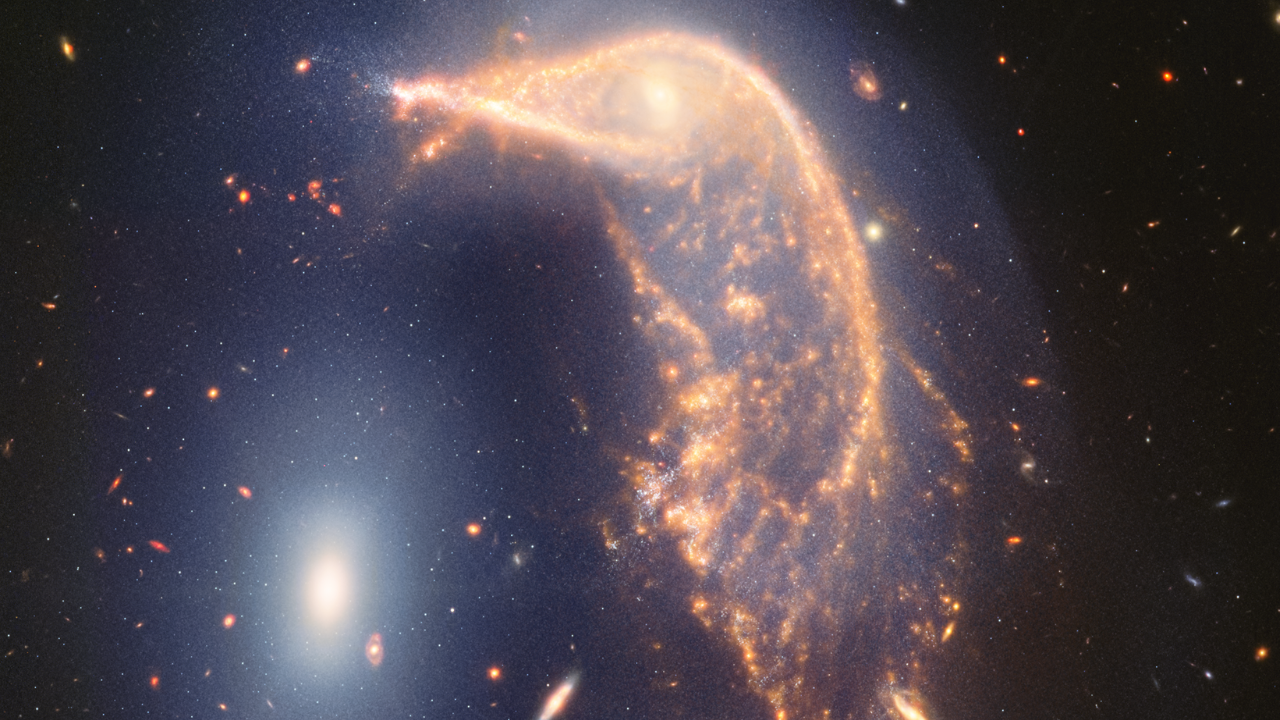1 min read
Interacting Galaxies Arp 142 (NIRCam and MIRI Compass Image)
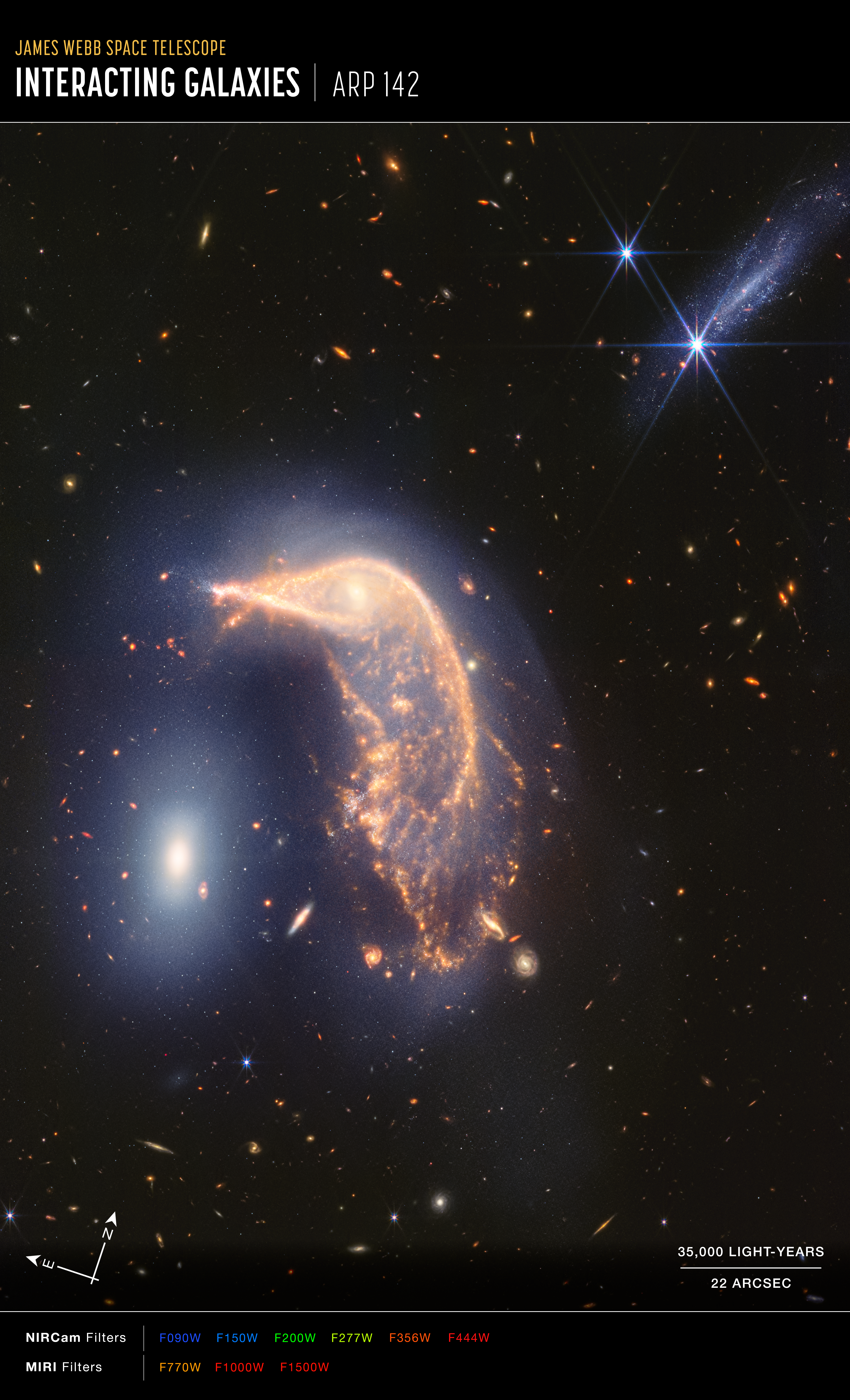
This image of interacting galaxies Arp 142, captured by the James Webb Space Telescope’s NIRCam (Near-Infrared Camera) and MIRI (Mid-Infrared Instrument), shows compass arrows, scale bar, and color key for reference.
The north and east compass arrows show the orientation of the image on the sky. Note that the relationship between north and east on the sky (as seen from below) is flipped relative to direction arrows on a map of the ground (as seen from above).
The scale bar is labeled in light-years, which is the distance that light travels in one Earth-year. One light-year is equal to about 5.88 trillion miles or 9.46 trillion kilometers.
The scale bar is also labeled in arcseconds, which is a measure of angular distance on the sky. One arcsecond is equal an angular measurement of 1/3600 of one degree. There are 60 arcminutes in a degree and 60 arcseconds in an arcminute. (The full Moon has an angular diameter of about 30 arcminutes.) The actual size of an object that covers one arcsecond on the sky depends on its distance from the telescope.
This image shows invisible near- and mid-infrared wavelengths of light that have been translated into visible-light colors. The color key shows which NIRCam and MIRI filters were used when collecting the light. The color of each filter name is the visible light color used to represent the infrared light that passes through that filter.
About the Object
- R.A. PositionR.A. PositionRight ascension – analogous to longitude – is one component of an object's position.09:37:43.09
- Dec. PositionDec. PositionDeclination – analogous to latitude – is one component of an object's position.02:45:47.01
- ConstellationConstellationOne of 88 recognized regions of the celestial sphere in which the object appears.Hydra
- DistanceDistanceThe physical distance from Earth to the astronomical object. Distances within our solar system are usually measured in Astronomical Units (AU). Distances between stars are usually measured in light-years. Interstellar distances can also be measured in parsecs.326 million light-years
- DimensionsDimensionsThe physical size of the object or the apparent angle it subtends on the sky.Image is 2.2 arcmin across (about 210,000 light-years)
About the Data
- Data DescriptionData DescriptionProposal: A description of the observations, their scientific justification, and the links to the data available in the science archive.
Science Team: The astronomers who planned the observations and analyzed the data. "PI" refers to the Principal Investigator.This image was created with Webb data from proposal: 6564 (M. Marin); Image Processing: Joseph DePasquale (STScI)
- InstrumentInstrumentThe science instrument used to produce the data.NIRCam, MIRI
- Exposure DatesExposure DatesThe date(s) that the telescope made its observations and the total exposure time.May 6, 2024
- FiltersFiltersThe camera filters that were used in the science observations.F090W, F150W, F200W, F277W, F356W, F444W, F770W, F1000W, F1500W
- Object NameObject NameA name or catalog number that astronomers use to identify an astronomical object.Arp 142, NGC 2396/2397
- Object DescriptionObject DescriptionThe type of astronomical object.Interacting Galaxies
- Release DateJuly 12, 2024
- Science ReleaseVivid Portrait of Interacting Galaxies Marks Webb’s Second Anniversary
- CreditImage: NASA, ESA, CSA, STScI

These images are a composite of separate exposures acquired by the James Webb Space Telescope using the NIRCam and MIRI instruments. Several filters were used to sample narrow and broad wavelength ranges. The color results from assigning different hues (colors) to each monochromatic (grayscale) image associated with an individual filter. In this case, the assigned colors are: Red: F1500W, F1000W, and F444W. Orange: F770W and F356W. Yellow: F277W. Green: F200W. Blue: F150W and F090W.
Related Images & Videos
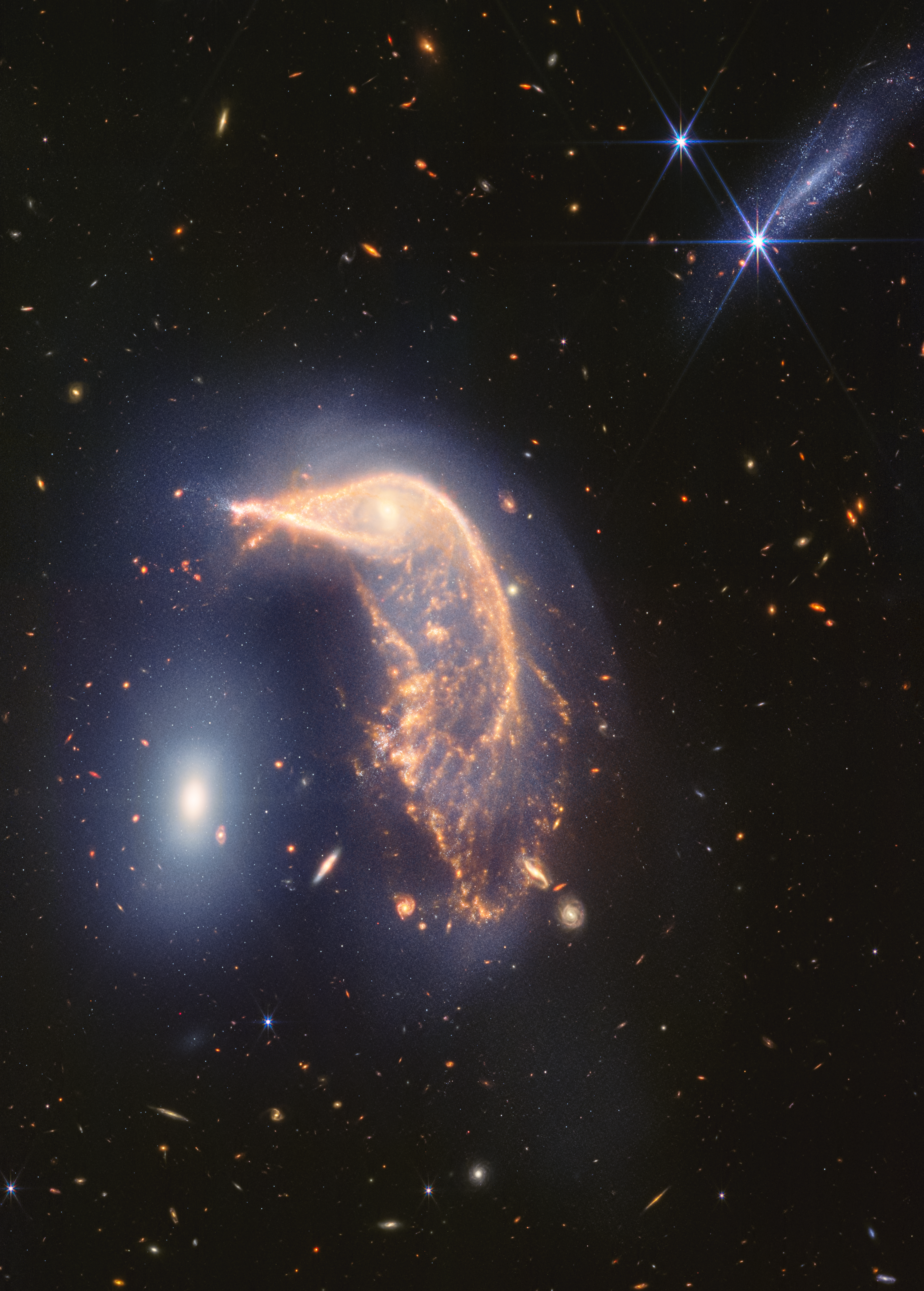
Interacting Galaxies Arp 142 (NIRCam and MIRI Image)
This “penguin party” is loud! The distorted spiral galaxy at center, the Penguin, and the compact elliptical galaxy at left, the Egg, are locked in an active embrace. A new near- and mid-infrared image from the James Webb Space Telescope, taken to mark its second year of...
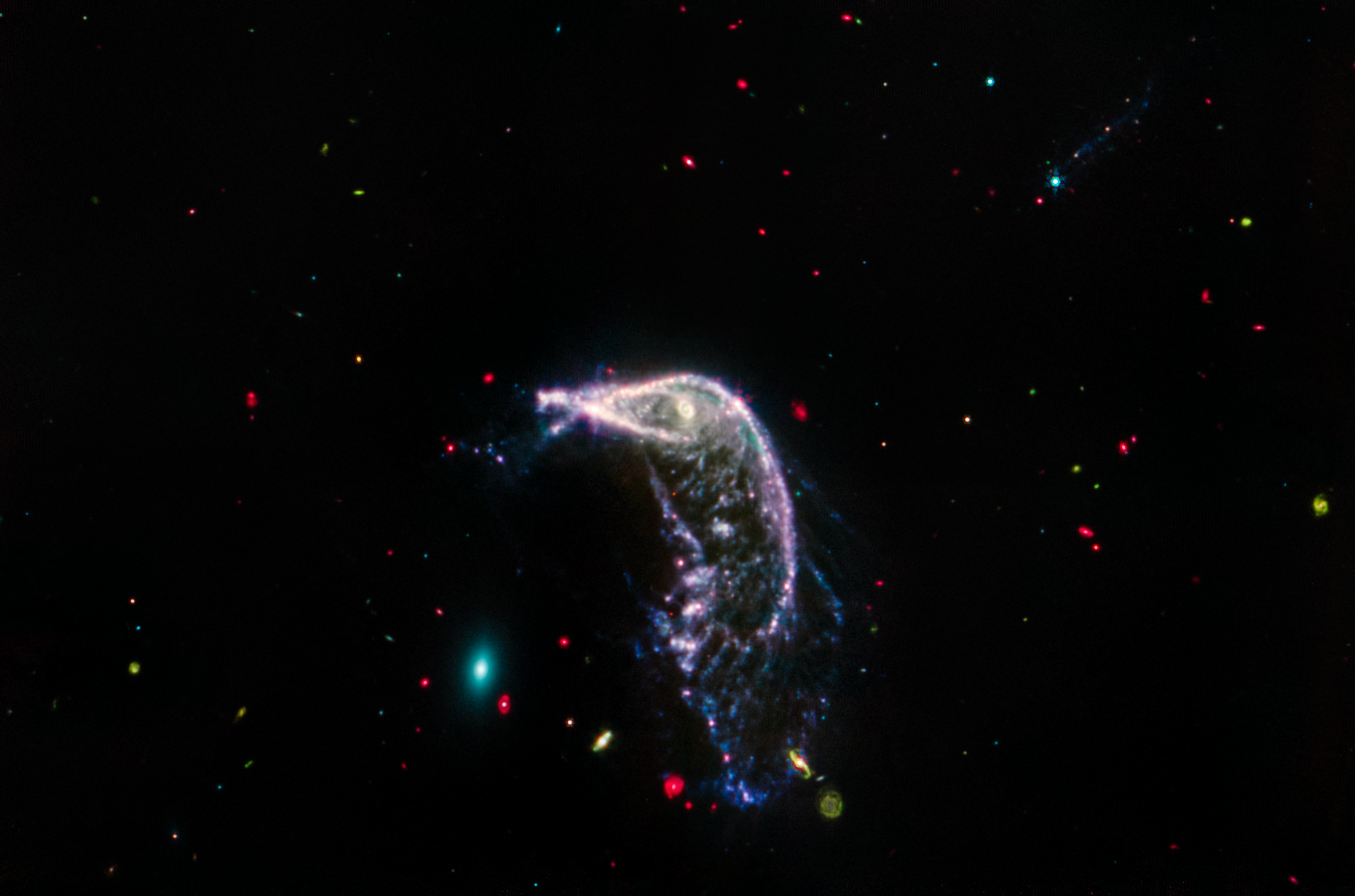
Interacting Galaxies Arp 142 (MIRI Image)
Webb’s mid-infrared view of interacting galaxies Arp 142 seems to sing in primary colors. The background of space is like a yawning darkness speckled with bright, multi-colored beads. This image was taken by MIRI , the telescope’s Mid-Infrared Instrument, which astronomers use...
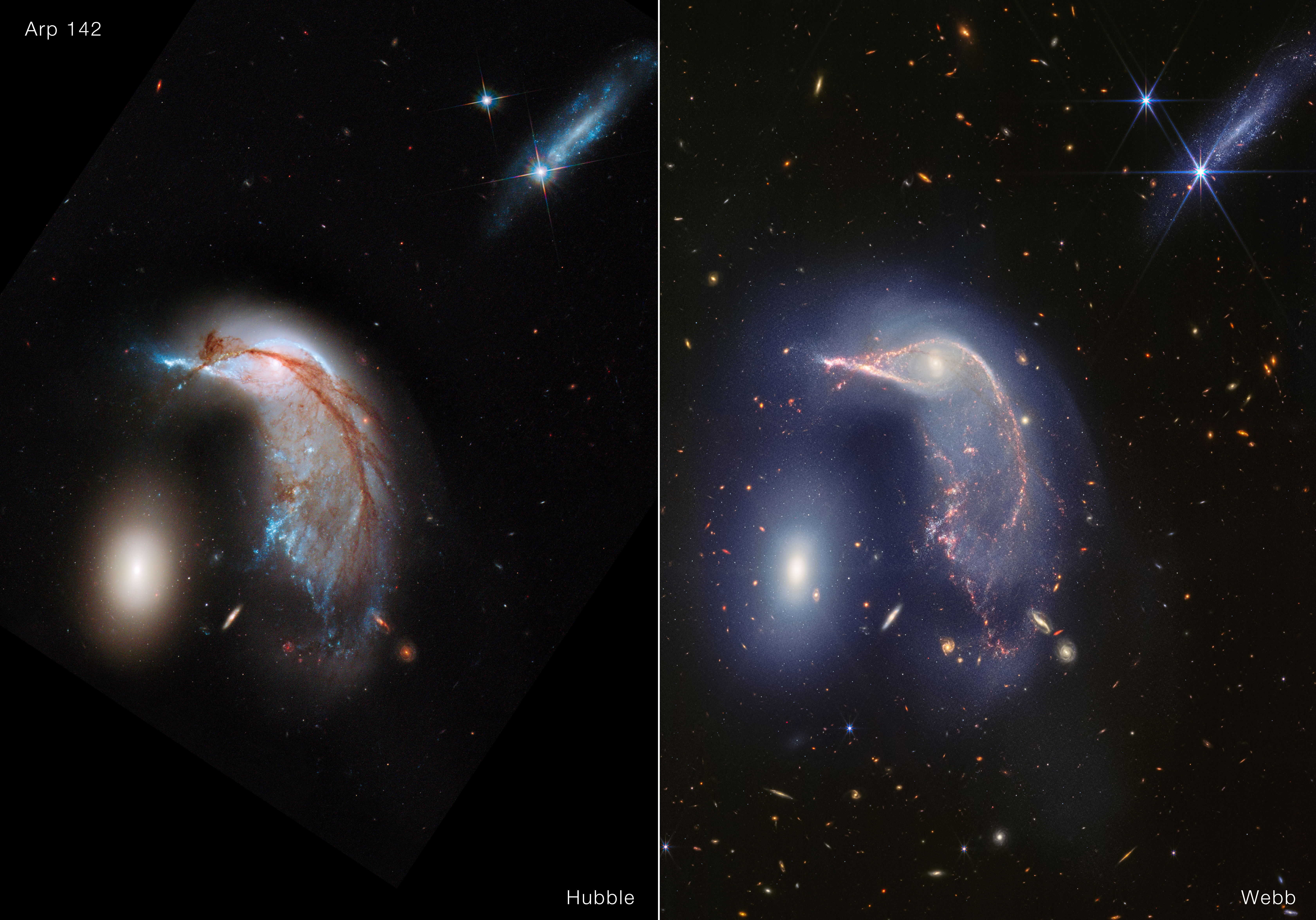
Interacting Galaxies Arp 142 (Hubble and Webb Image)
Two penguins, two eggs — two very different color schemes! The Hubble Space Telescope captured visible light when observing Arp 142, nicknamed the Penguin and the Egg, in 2013 . At right is the James Webb Space Telescope’s near-infrared light view of the same region. Both images...
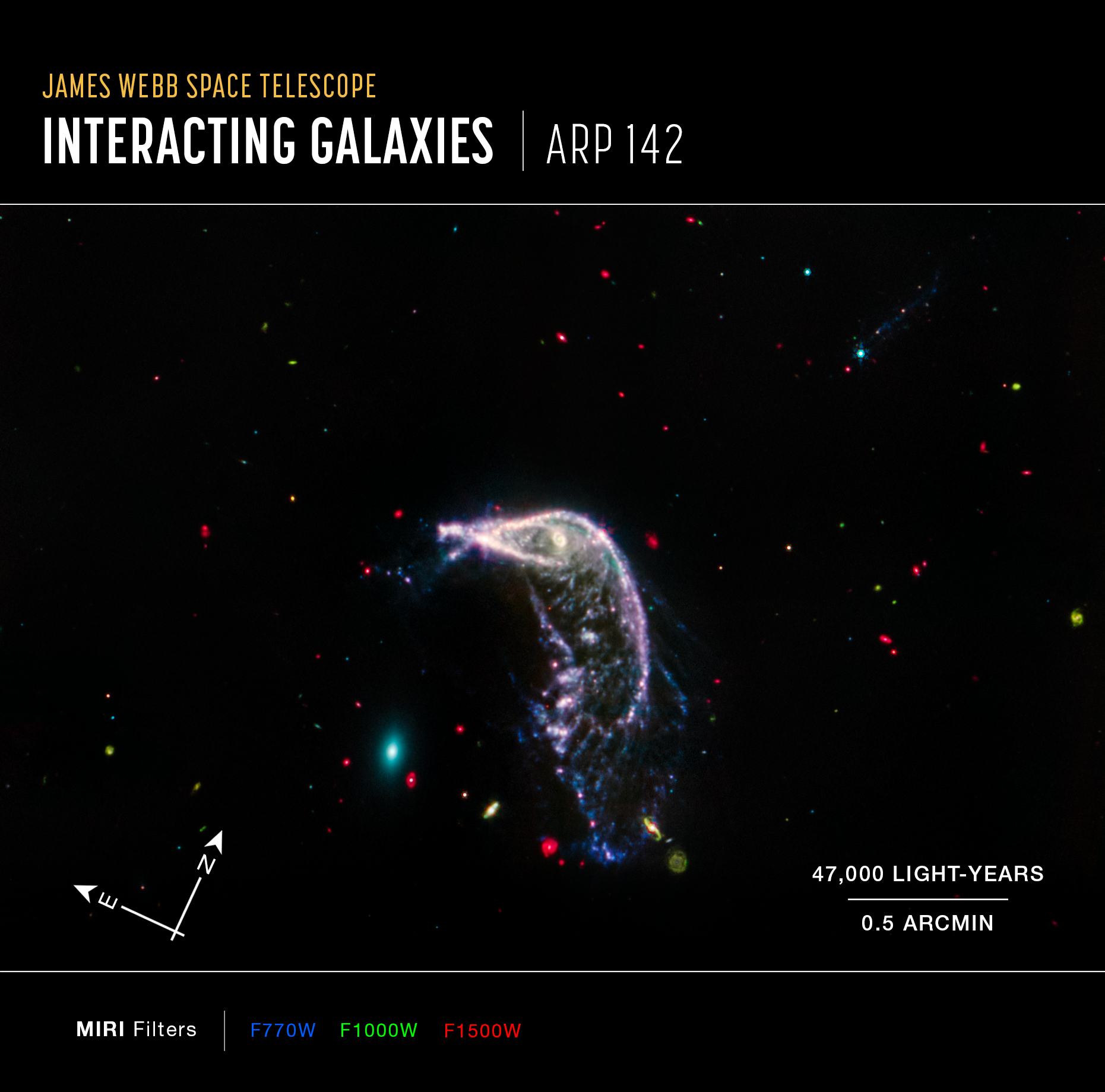
Interacting Galaxies Arp 142 (MIRI Compass Image)
This image of interacting galaxies Arp 142, captured by the James Webb Space Telescope’s MIRI (Mid-Infrared Instrument), shows compass arrows, scale bar, and color key for reference. The north and east compass arrows show the orientation of the image on the sky. Note that the...
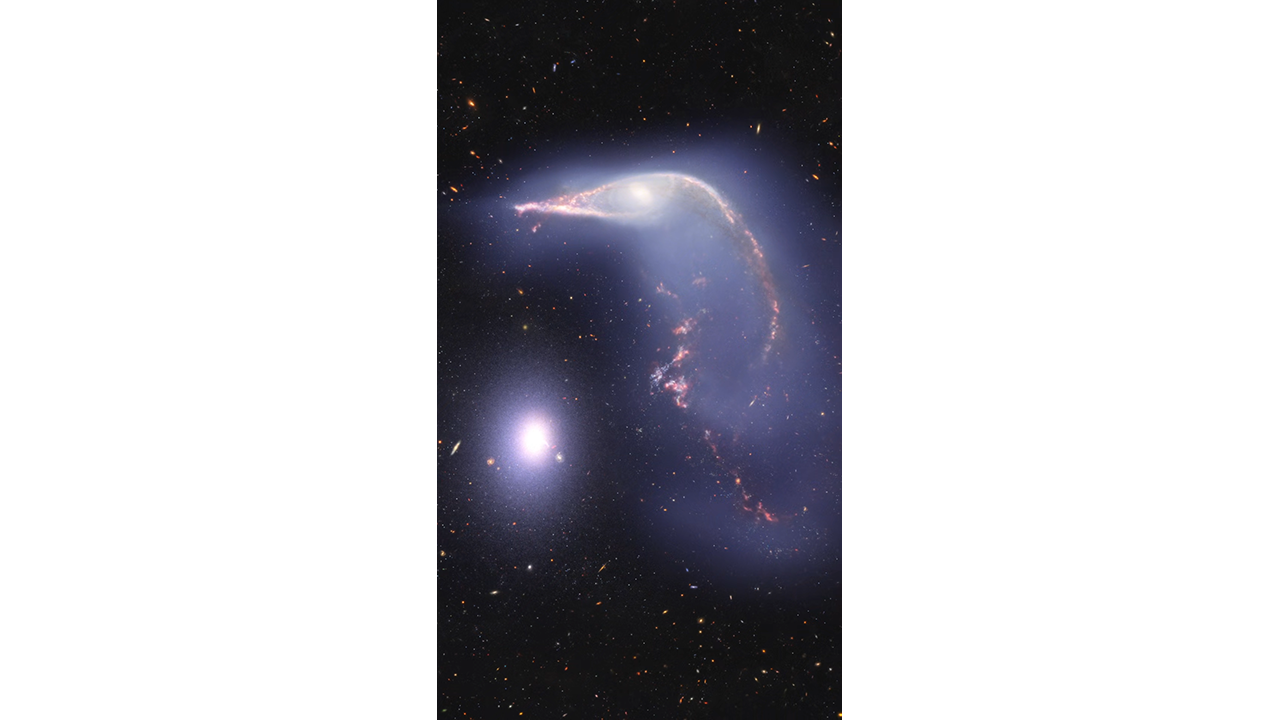
Arp 142 Visualization
This visualization examines the three-dimensional structure of Arp 142, a pair of interacting galaxies nicknamed the Penguin and the Egg, as seen in near-infrared light by the James Webb Space Telescope. The Penguin, a spiral galaxy cataloged as NGC 2936, has passed by the Egg,...
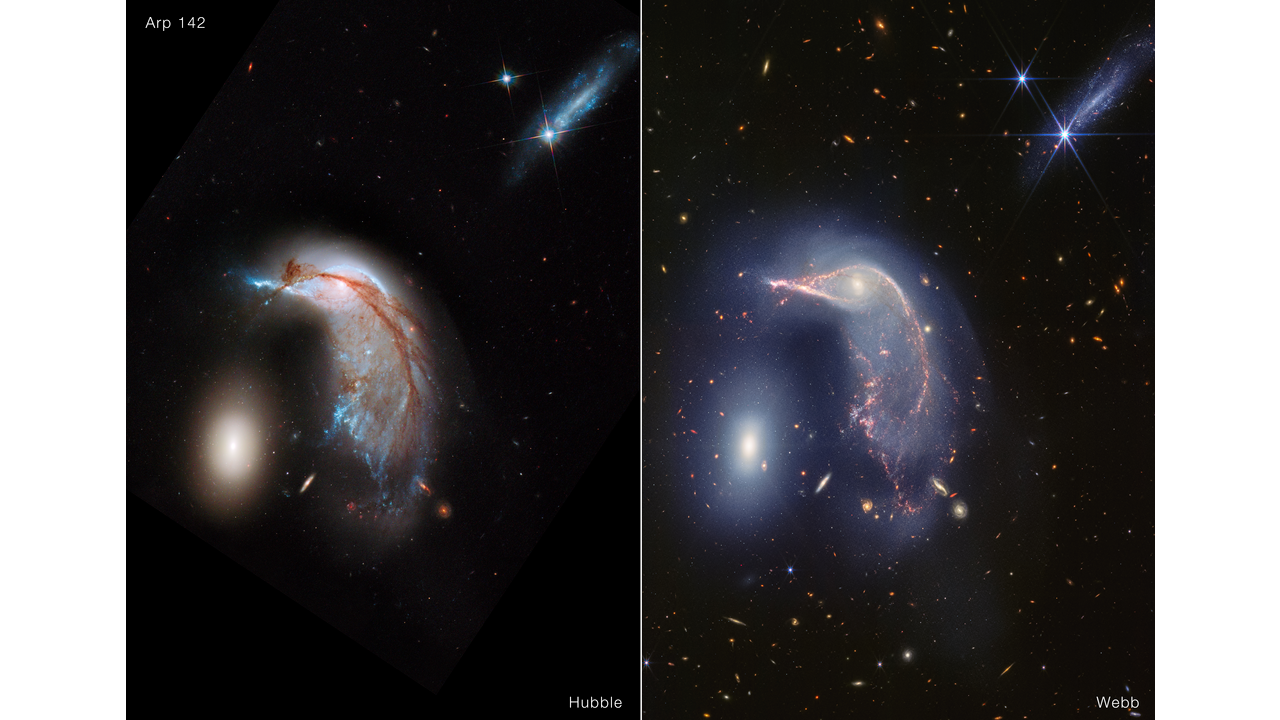
Arp 142 Hubble to Webb Fade
This video compares images of two interacting galaxies cataloged Arp 142, nicknamed the Penguin and the Egg. The first image is in visible light, and was captured by the Hubble Space Telescope’s Wide Field Camera 3 (WFC3). The second shows near-infrared light observed by the...
Share
Details
Laura Betz
NASA’s Goddard Space Flight Center
Greenbelt, Maryland
laura.e.betz@nasa.gov
NASA, ESA, CSA, STScI


























